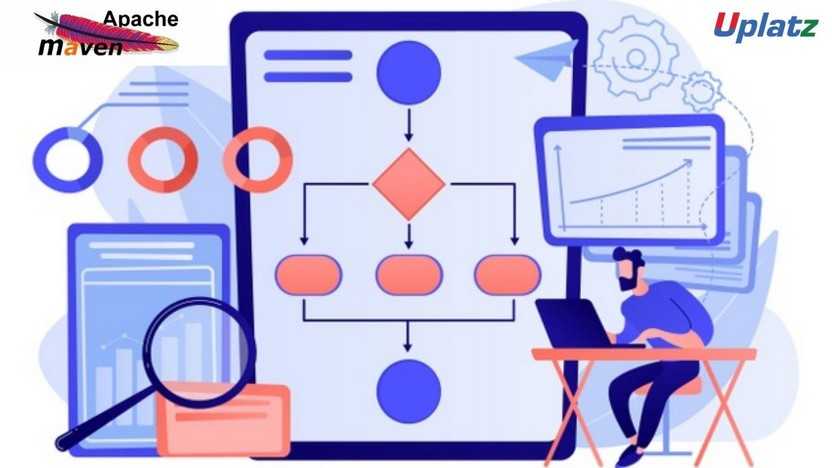Overview Course - Junit 5
Learn about JUnit 5, the structure of good unit tests, assertions, assumptions and parameterized tests and more. View Course Curriculum
Price Match Guarantee
Full Lifetime Access
Access on any Device
Technical Support
Secure Checkout
Course Completion Certificate
View Course Curriculum
Price Match Guarantee
Full Lifetime Access
Access on any Device
Technical Support
Secure Checkout
Course Completion Certificate
 92% Started a new career
Enroll Now
92% Started a new career
Enroll Now
-
 87% Got a pay increase and promotion
87% Got a pay increase and promotion
Students also bought -
-

- Maven
- 8 Hours
- GBP 12
- 293 Learners
-

- Maven (basic to advanced)
- 10 Hours
- GBP 12
- 461 Learners
-

- DevOps
- 20 Hours
- GBP 12
- 1677 Learners

This is an overview course on JUnit 5 while the complete detailed-level JUnit 5 course is available at -
https://training.uplatz.com/online-it-course.php?id=junit-5-351
Uplatz's JUnit 5 course is designed for testers and software developers who want to learn how to test software at a detailed level using JUnit 5 and JUnit Jupiter. The operation taught in this course is specifically oriented to JUnit 5, and is reinforced by a series of hands-on exercises that allow you to build unit tests gradual as the workshop progresses. Uplatz course bridges the gap between solid unit test design and unit test automation. The course covers both functional and structural testing, with numerous examples and templates.
Junit was developed by Kent Beck and Erich Gamma. Its first version was released in 1997. It became one of the most popular testing frameworks in the Java community due to its ease of use. It is a lightweight testing framework which allowed Java developers to write unit test cases in Java language. The recent version released is 5.3.2, which is termed as Junit 5.
Junit 5 is a powerful and popular Java testing framework. It is composed of many different modules. These different modules are parts of three sub-projects as follows: - Junit Platform, Junit Jupiter, Junit Vintage. In short it is represented as, JUnit 5 = JUnit Platform + JUnit Jupiter + JUnit Vintage
The architecture of JUnit 5 mostly comprises of these 3 components/sub-projects. This course gives you an understanding about JUnit5 with easy-to-follow examples. You will learn the how to write proper unit tests using JUnit 5 and run them. Also, you will learn how to use Mockito framework for mocking objects. At the end of the course, you will gain the right skillset to write appropriate JUnit testcases for testing their applications.
Course/Topic - JUnit 5 overview - all lectures
-
In this session we will discuss about the basic introductory topics of Junit. This video talks about the unit testing framework for Java developers, what is unit testing – as a type of software, peer testing, what is Junit and official website of Junit.
-
In this session we will discuss about adding Junit5 dependency in Maven project using HTS tool to develop projects in JAVA. Further we will see ow dependency is added.
The objective of this JUnit 5 course is to provide learners with a comprehensive understanding of unit testing in Java, focusing on the JUnit 5 framework. Participants will learn how to write, execute, and manage unit tests to ensure code quality and reliability. The course covers fundamental concepts such as test annotations, assertions, and test lifecycle methods, as well as advanced features like parameterized tests and custom extensions. Through hands-on exercises and practical examples, learners will gain the skills needed to implement effective testing strategies, integrate JUnit 5 with build tools and continuous integration systems, and apply best practices to produce robust, maintainable Java applications.
Fundamental Objectives:
1) Understanding Unit Testing: Grasping the concept of unit testing, its importance in software development, and how it contributes to code quality and maintainability.
2) JUnit 5 Architecture: Learning the new architecture of JUnit 5, which is composed of multiple modules: JUnit Platform, JUnit Jupiter, and JUnit Vintage.
3) Basic Annotations and Assertions: Mastering the core annotations (Test, BeforeEach, AfterEach, etc.) and assertions (assertEquals, assertTrue, etc.) for writing and executing tests.
4) Test Lifecycle and Execution: Understanding the test lifecycle, test execution order, and how to control it using annotations like TestMethodOrder.
5) Parameterized Tests: Writing tests that run multiple times with different input parameters to ensure broader code coverage.
6) Exception Testing: Learning how to test for expected exceptions and handle unexpected exceptions during test execution.
7) Test Suites and Grouping: Organizing tests into suites and groups for better structure and selective execution.
Advanced Objectives:
1) Test Extensions and Custom Annotations: Creating custom extensions and annotations to add specialized behavior to tests.
2) Mocking and Stubbing: Using mocking frameworks (like Mockito) to isolate units of code and test their behavior in isolation.
3) Dependency Injection: Understanding how to use dependency injection in tests to create more flexible and maintainable code.
4) Test Doubles: Using test doubles (dummies, fakes, stubs, mocks) to simulate dependencies and control test scenarios.
5) Performance and Load Testing: Exploring performance and load testing techniques using JUnit 5.
Overall Goals:
1) Writing Effective Unit Tests: Developing the skills to write clean, maintainable, and effective unit tests using JUnit 5.
2) Improving Code Quality: Leveraging unit testing to improve code quality, catch bugs early, and facilitate refactoring.
3) Integrating with Build Tools: Learning how to integrate JUnit 5 tests into build tools like Maven or Gradle.
4) Embracing Test-Driven Development (TDD): Understanding the TDD methodology and how to apply it using JUnit 5.
JUnit5 – course curriculum
• JUnit Introduction
• Adding JUnit5 dependency in Maven project
• JUnit5 Annotations
• JUnit5 @RepeatedTest Annotation
• JUnit5 Assertions
• JUnit5 Timeouts
• JUnit5 Expected Exceptions
• JUnit5 Parameterized Tests
• JUnit5 How to run Unit Test with Maven
• JUnit5 Tagging and Filtering
• Hamcrest Framework
• Unit Testing on Spring Boot Repository
• Spring Boot Integration Testing
The Junit5Certification ensures you know planning, production and measurement techniques needed to stand out from the competition.
JUnit is a Java unit testing framework that's one of the best test methods for regression testing. An open-source framework, it is used to write and run repeatable automated tests.
JUnit 5 is the latest stable release of JUnit, and it comes with a lot of great features. Some of them are there to make your tests more readable. Some were added so you can enhance your written tests and add new scenarios.
To learn to use it well can literally take years. It's the same with many other things. Sure, you can study for the SCJP for 3 months and pass it, but that doesn't mean you know how to program well in Java.
One test runner can only execute tests in JUnit 4 at a time (e.g. SpringJUnit4ClassRunner or Parameterized ). JUnit 5 allows multiple runners to work simultaneously. JUnit 4 never advanced beyond Java 7, missing out on a lot of features from Java 8. JUnit 5 makes good use of Java 8 features.
JUnit 5 is the next generation of JUnit. The goal is to create an up-to-date foundation for developer-side testing on the JVM. This includes focusing on Java 8 and above, as well as enabling many different styles of testing. JUnit 5 is the result of JUnit Lambda and its crowdfunding campaign on Indiegogo.
Uplatz online training guarantees the participants to successfully go through the Junit5 Certification provided by Uplatz. Uplatz provides appropriate teaching and expertise training to equip the participants for implementing the learnt concepts in an organization.
Course Completion Certificate will be awarded by Uplatz upon successful completion of the Junit5 online course.
The Junit5 draws an average salary of $115,000 per year depending on their knowledge and hands-on experience.
JUnit 5 is the next generation of JUnit. The goal is to create an up-to-date foundation for developer-side testing on the JVM. This includes focusing on Java 8 and above, as well as enabling many different styles of testing. JUnit 5 is the result of JUnit Lambda and its crowdfunding campaign on Indiegogo.
Writing Test Suites. Using JUnit 5 test suites, you can run tests spread into multiple test classes and different packages. JUnit 5 provides these annotations to create test suites. To execute the suite, you need to use @Suite annotation and include junit-platform-suite module in the project dependencies.
Note that salaries are generally higher at large companies rather than small ones. Your salary will also differ based on the market you work in.
Software Engineering SMTS.
Android Kotlin Developer.
LMTS Engineering.









